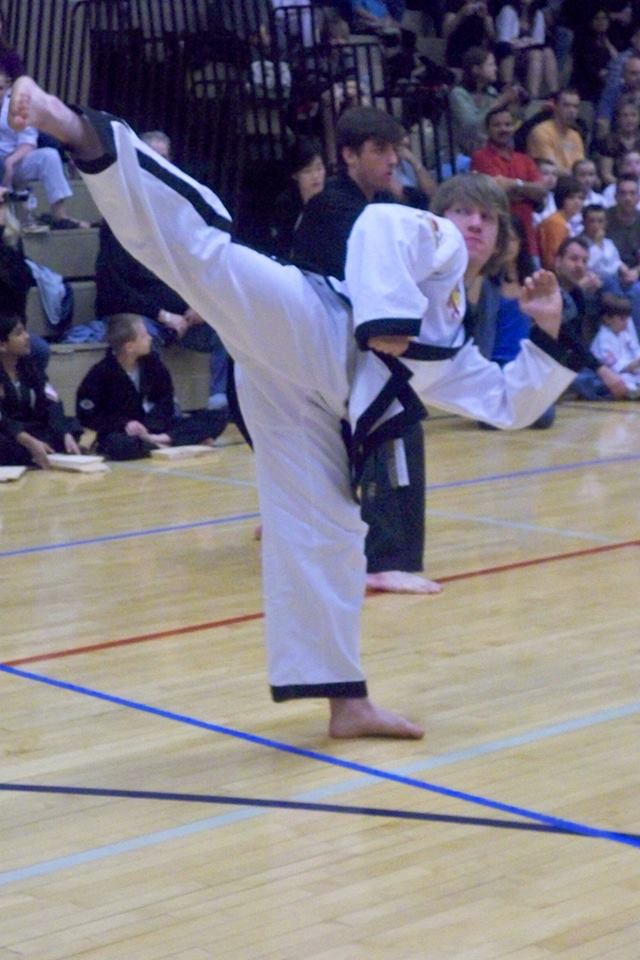Training Style

At WMAA, we teach a variety of Korean martial arts that encompass a lot of different skills. Below you will find an overview of the different skills our students learn.
Taekwondo
Translated to English, Taekwondo literally means "the way of fist and foot." Characterized by powerful kicks and deflections by hand, this defensive martial art relies on the strength of both the body and the mind. Taekwondo promotes the development of discipline,respect, confidence, and self-control as well as challenging the student physically. Each belt rank engages the student in a new series of movements called forms. A student of Taekwondo grows as a person as he moves from one belt rank to the next.
- Tae = Foot
- Kwon = Fist
- Do = Way of life
- Jang = Place
- Do Jang = Place to practice the Way
Hapkido
Hapkido is a dynamic and highly eclectic Korean martial art. It is a form of self-defense that employs joint locks, grappling and throwing techniques of other martial arts, as well as kicks, punches, and other striking attacks. There is also the use of traditional weapons, including sword, rope, nunchaku, cane, short stick, and long staff, which vary in emphasis depending on the particular tradition examined.
Hapkido contains both long- and close-range fighting techniques, utilizing jumping kicks and percussive hand strikes at longer ranges and pressure point strikes, joint locks, or throws at closer fighting distances. Hapkido emphasizes circular motion, redirection of force, and control of the opponent. Practitioners seek to gain advantage through footwork and body positioning to incorporate the use of leverage, avoiding the use of strength against strength.
The art was taught by Choi Yong-Sool when he returned to Korea after World War II, having lived in Japan for 30 years. This system was later combined with kicking and striking techniques of indigenous and contemporary arts such as taekkyeon, as well as throwing techniques and ground fighting from Japanese judo.
Sparring & Weapons Training
Students at our academy also receive instruction in several different types of traditional weapons, including the sword, short stick, long staff, cane, rope, and nunchaku. This weapons training usually begins after a student has demonstrated proficiency in unarmed arts. Commonly, this training is pursued at the Red Belt or Black Belt level.
Sparring is a dynamic application of Taekwondo techniques in a non-scripted environment that helps students to advance their skills in a challenging, but safe manner. Students wear protective padding, and obey by a set of guidelines in order to test their opponent's reaction and score points. Points are scored by unguarded strikes to the opponent's protective gear. Students who have trained in the art about 6 months or more may take place in sparring exercises as a way to further their understanding of technique application, timing, footwork, and spacial awareness.

